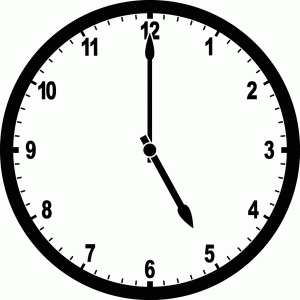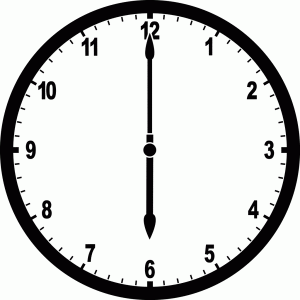


Somewhere near where North Dakota Highway 23, heading west of New Town and across the Missouri River, meets North Dakota Highway 22, for the swing south to Killdeer (a drive of less than 44 miles), our AI devices (a built-in 2018 Ford Escape GPS), Siri, one Apple Watch, and our two iPhones (iPhone 14 and iPhone 7) told us they were in profound disagreement about whether it was 6 p.m. Central Daylight Time or 5 p.m. Mountain Daylight Time. Only the iPhone 7, which Apple said in June 2022 it would no longer support with major iPhone operating system (iOS) updates, correctly picked 5 p.m. Mountain Daylight Time.
Welcome to North Dakota. The Twilight Zone Time Zone state.
When we arrived in Killdeer and described our confusion, friends who had lived in this area of Dunn County their entire lives, essentially said: “Welcome to our world.” A Dunn County commissioner said it can be tricky at times organizing business and other appointments in Bismarck, the state capital about 130 miles southeast of Killdeer, because Bismarck is in the Central Time Zone. Another observed the time zone boundary runs through her back yard.
A dozen of North Dakota’s 53 counties, all of them west of the Missouri River, are either partially or wholly within the Mountain Time zone.
In October 2009, the Board of Commissioners for Mercer County, North Dakota, petitioned the U.S. Secretary of Transportation to move Mercer County from the Mountain Time zone to the Central Time zone. The Mercer County petition stated several reasons for the request, outlining the commission’s view of why the change would meet the “convenience of commerce” standard.
With more business conducted with Bismarck and Fargo – both Central Time communities – some say some people in Mountain Time areas find it hard to order supplies or get technical support. Some also estimate four business hours are lost every day between the two time zones – one each in the morning and evening and the difference in lunch hours.
“Geographically,” the Board of Commissioners of Mercer County said in their federal petition, “Mercer County is adjacent to the central time zone on the east, north, and south sides of the county, and is therefore well located for inclusion in the central time zone. The Fort Berthold Indian Reservation, located in Mercer County, is currently in the central time zone.
The principal standard for the U.S. Department of Transportation deciding whether to change a time zone is the convenience of commerce, which is defined very broadly to include consideration of all of the impacts upon a community that would result in a change in its standard of time:
- Where do businesses in the community get their supplies and to where do they ship their goods or products?
- Where does the community receive television, radio, and other media broadcasts from?
- Where are the newspapers, blogs, or other materials published that serve the community?
- Where does the community get its bus and passenger rail services; if there is no scheduled bus or passenger rail service in the community, where must residents go to obtain these services?
- Where is the nearest airport; if it is a local service airport, to what major airport does it carry passengers?
- What percentage of residents of the community work outside of the community; where do these residents work?
- What are the major elements of the community’s economy; is the community’s economy improving or declining; what Federal, State, or local plans, if any, are there for economic development in the community?
- If residents leave the community for schooling, recreation, health care, religious worship, or shopping for essentials what standard of time is observed in the places where they go for these purposes?
James MacPherson, a Bismarck-based Associated Press reporter, wrote in 2017: “Few subjects set off a parochial debate in North Dakota like a move to reset the clocks.
“The division between Central and Mountain time at one time in North Dakota roughly followed the Missouri River,” MacPherson wrote, “but a few counties have switched solely to Central time beginning with Oliver County in 1992, after voter approval.
“The switch to Central time by some counties and not others has made the current time-zone line appear as if it were drawn with a squirt gun.
“Williston, which is nearly on the Montana-North Dakota border, is in Central time. Yet Dickinson, which is much farther east, is on Mountain time. Even odder are the neighboring cities of Watford City and Killdeer. Watford City is on Central time, while Killdeer, about 45 miles southeast, is on Mountain time.”
“In North Dakota,” he wrote, “many refer to Central time as ‘fast time,’ as Central time is one hour ahead of Mountain.
The late Republican North Dakota District 39 State Senator Bill Bowman, from Bowman, a ranching community in the state’s southwest corner, said six years ago that he and others likened time-zone legislation to stepping into “piranha-infested waters.”
“It upsets people when we are wasting our time on this, and when we should be working on budget and the needs of our state,” he said. “There are a lot of people, and a lot of cowboys in my district, who just want to be left alone and I represent those people.”
Said one letter to Bowman from a constituent opposing the legislation: “Please don’t cater to those city people. Central time has slowly crept to the west and it really needs to stop.”
You can also follow me on Twitter at: https://twitter.com/jwbarker22
.